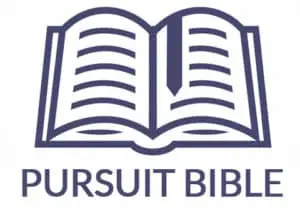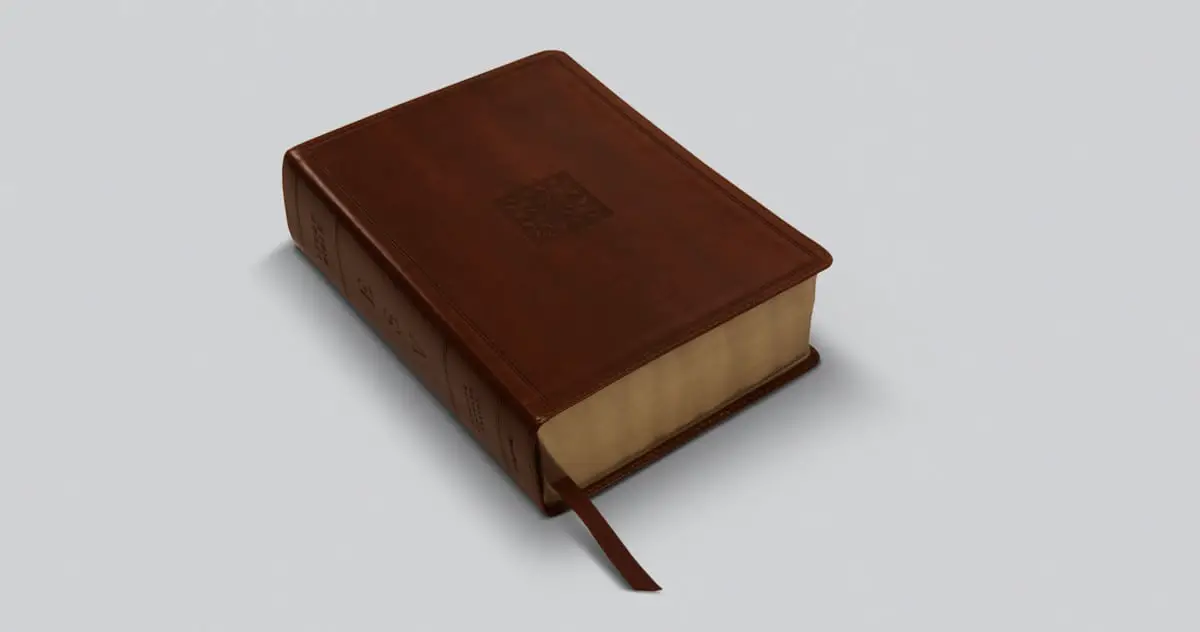A Study Bible is an all-in-one resource that contains the text of the Bible and many of the most-used Bible study resources. For many people, especially those who are fairly new at studying the Bible on their own, this one book will be their main study resource.
I’ve used more than a dozen different Study Bibles in the past 30 years and the one that I would currently recommend for in-depth Bible Study is the ESV Study Bible (link to Amazon – opens in a new window).
For those just starting out, I recommend the CSB Tony Evans Study Bible (You can check the reviews on Amazon) instead because it has a more devotional approach along with solid Biblical scholarship.
9 Things to Look for When Choosing a Study Bible
Font Size
Font size is not to be underestimated! All the best resources and tools won’t do much good if you can’t read them comfortably. Some of the font sizes get down to 7 point font or even smaller on some editions, like those that are labeled “personal size,” so you really want to keep this in mind.
Some Study Bibles come in different editions that use smaller fonts to reduce the overall size and thickness of the Bible. This also brings the cost down a few dollars, but unless you’re very comfortable with small print, go for one with a bigger font.
What is the best Study Bible? It’s one that you will actually read and use. Make sure to pay attention to the font size and these other 8 factors.
Good quality paper
Most Study Bibles tend to be over 2000 pages in length, so the quality and thickness of the paper make a big difference. It’s great when you find one that strikes that fine balance between quality and usability so that the Bible is not too thick, but the paper is not so thin that the print shows through on the other side. A good quality paper also important if you take notes in your Bible or use highlighters.
Translation
Most Study Bibles are only available in one translation so if you happen to have a particular one that you’re looking for, you can start your search there. Keep in mind that it can be helpful to have a second translation to compare with your primary reading Bible as well.
Contributors
Most Study Bibles are a group effort, so it’ll be important to consider the Bible scholars that have contributed to the notes and articles. Study Bibles are usually published by major publishing companies and tend to stay away from extreme or controversial views, so usually, this is not a big factor for most people.
The Amount of Commentary or Notes
Study Bibles differ most on the amount of commentary or notes that are alongside the text. Some Study Bibles will have commentary on more verses in the Bible whereas others, especially ones that have a more narrow focus (for example, Study Bibles for women or students, ones that are focused on application or a narrower niches like archaeology) will have much less commentary.
In the beginning, you might find yourself looking at the commentary section a lot, so it’ll be helpful to choose a more general Study Bible that has more commentary.
List of Features
Most Study Bibles include some or all of these features:
- The text of the Bible. This is usually one translation of the Bible. Choose one that is a modern, readable translation that is accurate to the original. Some popular ones are the ESV, NIV, NKJV, NLT or NASB
- Book Introductions. Each book of the Bible is introduced with basic facts about the author, date of writing, the recipients, the main themes, and maybe an outline of the book.
- Commentary/notes
- Cross-references. These are sometimes listed in the margins or between the text and the commentary. It tells you things like what other places in the Bible talk about the same topic. This is a great way to Study the Bible, especially in the beginning.
- Concordance. This is like an index at the back that tells you where to find common words. For example… where can I find the word “assurance?” Keep in mind that these are condensed versions, and some Study Bibles have concordances that are more thorough than others.
- Maps. Some maps will be with the commentary. There are also some pretty standard maps at the back that most Bibles will have.
- Charts and Diagrams. Most Study Bibles will list in the beginning the number of charts or illustrations that it contains.
- Other Helps. Depending on the Study Bible, they might include resources like articles on various topics, Biblical archaeology findings, Word studies on major words, life application topics
Cover
Some Study Bibles come in choices of different covers: Hardcover, imitation leather, leather, and sometimes, even paperback. The most important thing is to look for a good quality binding that allows the Study Bible to stay open to the page you turn it to.
Note: Some Bibles on retailers like Amazon might list a Bible as a paperback, but it is actually imitation leather.
If you think you might carry it around with you, you might want to consider getting either a hardcover if one is available or upgrade to the leather-bound or imitation leather.
Indexed Editions
Some Study Bibles have the indexes built-in to the side of the Bible that lists the name of the book of the Bible for faster access. Especially in the beginning, it is very helpful to be able to flip to the book you’re looking for without having to go to the Table of Contents.
This is just a matter of personal preference and convenience. Although you can purchase Bible index tabs and apply them yourself (if you have the patience and dexterity), it is much more elegant to have them built-in. That way, you won’t have uneven tabs sticking out of the side of your Bible.
Format
Should you go for a print copy or an eBook? If this is your first Study Bible, I would highly recommend that you get the print edition if you can. The eBook versions are usually cheaper, but it’s helpful to have a print version because it’s difficult to know what resources are available unless you click or swipe to various parts.
In the beginning, you might not know that there are all these great resources available in the Study Bible or why they would be useful. You wouldn’t be able to get to them unless you clicked on a few items in an eBook.
Look Forward to Deeper and More Meaningful Bible Study
If you keep these factors in mind as you choose a Study Bible, you can look forward to many years of great use and fruitful hours of study.
I wrote an article that shows you how to use a Study Bible. Whether you have one or not, you can get an idea of what to expect: How to Use a Study Bible: Helpful Illustrated Guide (link opens in a new window).

